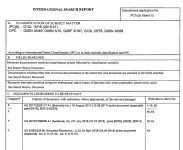alwaysgreen
Top 20
The following is who Millennium are:
“Overview
Update this profile
Investor Type
Status
- Venture Capital
Professionals
- Active
Investments
- 7
Portfolio
- 120
Exits
- 20
- 79
Description
Founded in 2002, Millennium Technology Value Partners has served as a pioneer and force for innovation within the venture community, providing extraordinary companies and their teams with the most flexible forms of capital imaginable. Millennium invests in best-in-class technology companies, including companies developing and implementing deep tech themes, such as artificial intelligence, machine learning, autonomous machines, cybersecurity, and robotics and sensors, and others”
They are Venture Capitalists like LDA Capital.
LDA Capital said great things about Brainchip.
Millennium are saying great things about Syntiant.
Both want to make a profit from the companies they have funded.
Who did Mercedes speak about in glowing terms Brainchip or Syntiant?
Who did MegaChips speak about in glowing terms Brainchip or Syntiant?
Who did Socionext say we’re going to keep them ahead in the technology race Brainchip or Syntiant?
Who did NASA fund to have Vorago Hardsil their chip Brainchip or Syntiant?
My opinion only DYOR
FF
AKIDA BALLISTA
I don't disagree but a number of the quotes at the link are from Renasas' management. They seem to have gone quiet on Brainchip and have focused a lot of their attention (including funds) into Syntiant as an investor.
Time will tell if they are still planning on implementing Akida in their products.


